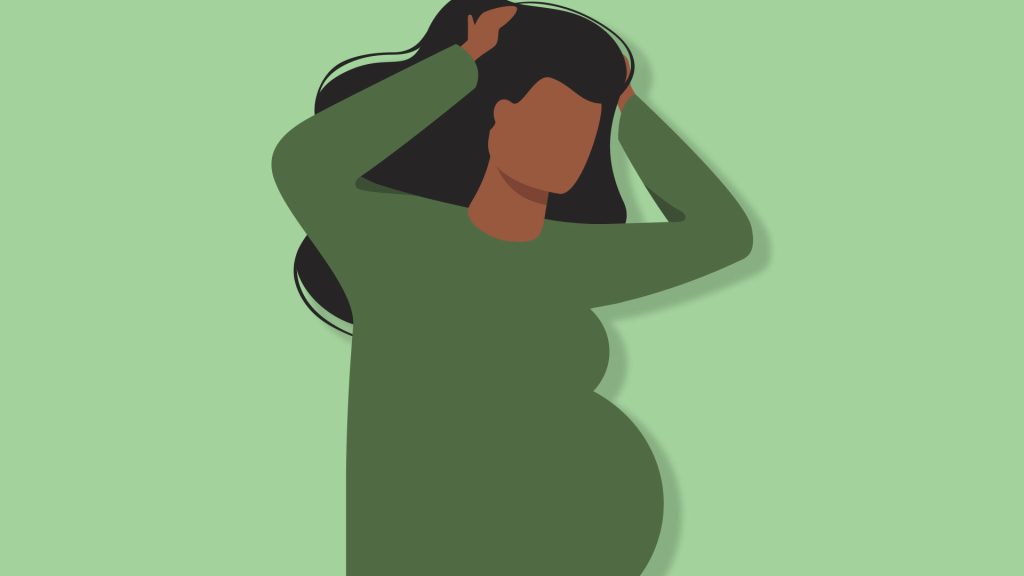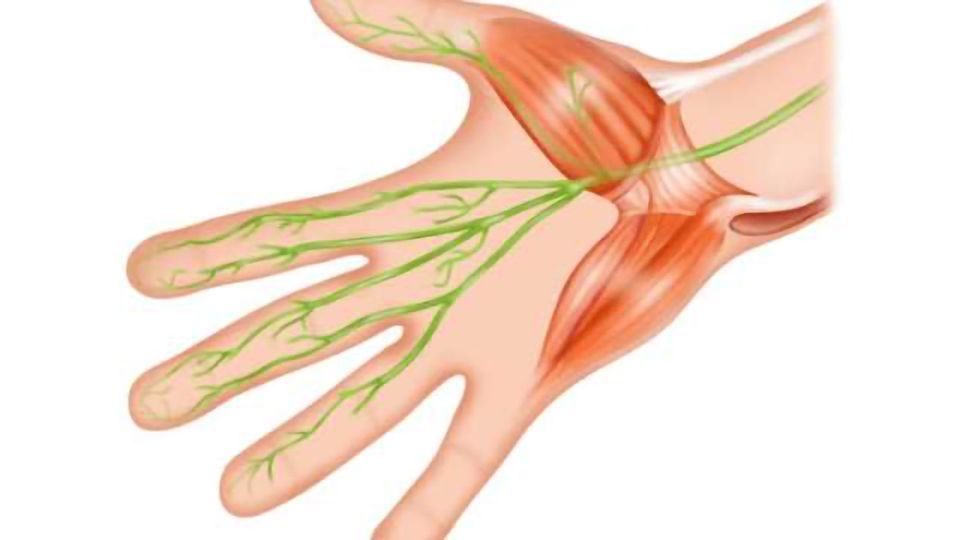Migraines increase the chance of problems during pregnancy.
A sizable prospective study was carried out by scientists at Brigham and Women’s Hospital in Boston to learn more about the link between migraines and unfavorable pregnancy outcomes.
According to their findings, women with pre-pregnancy headaches had a 40% increased risk of preeclampsia, a 28% increased risk of gestational hypertension, and a 17% increased risk of premature delivery.

These findings, according to the researchers, point to the potential advantage of greater monitoring for pregnant women who have a history of migraines.
Compared to men, women have a 2 to 3 times higher lifetime risk of developing migraines, which are most prevalent in women between the ages of 18 and 44.
Before a migraine attack, some people see an “aura” that frequently consists of flashing lights in their range of vision.
An aura-specific migraine, in particular, has been linked to a two-fold increased risk of myocardial infarction and stroke, according to a recent meta-analysis.
The molecular factors linked to cardiovascular risks in migraine sufferers may also raise the chance of pregnancy difficulties, according to a research hypothesis.
Meanwhile, little research has examined the connection between migraine and difficulties during pregnancy. Small study populations, a lack of knowledge about potential confounding variables, and the migraine phenotype (with or without aura) are the limitations of these investigations.
To fill in these knowledge gaps, scientists from Brigham and Women’s Hospital in Boston created a significant prospective study to calculate the correlations between pre-pregnancy migraine and the risk of gestational diabetes, gestational hypertension, pre-eclampsia, pre-term delivery, and low birth weight.
The researchers also looked at potential effect modification by aspirin use and examined whether these relationships varied by migraine phenotype in the study, which was published in the journal Neurology.
Study on migraines and pregnancy
Data from the Nurses’ Health Study II (NHSII) were used by Brigham instructors Alexandra Cari Purdue-Smithe, Ph.D., and her team to achieve these goals.
In 1989, 116,430 registered nurses in the United States between the ages of 25 and 42 participated in this study. Questionnaires about participants’ lifestyles and health were given out. Every two years, participants in this study were required to answer questions on their lifestyle and general health.
In 2009, participants submitted information on each pregnancy they had ever had, including any unfavorable results. In 2007, participants in the NHSII were asked if they had ever experienced aura along with their migraine headaches.
Any self-reported medical diagnosis of migraine on the 1989, 1993, and 1995 NHSII questionnaires was considered a migraine for the purposes of this study, according to Purdue-Smithe’s team.
They restricted their studies to 30-555 pregnancies in 19,694 women who had no history of cardiovascular disease, type 2 diabetes, or cancer. These pregnancies had to be at least 20 weeks long.
Using log-binomial and log-Poisson models, the researchers determined the relative risk and 95% confidence interval for each unfavorable pregnancy outcome. These models were adjusted for several confounding variables, including age at conception, age at menstruation’s onset, race and ethnicity, body mass index, chronic hypertension, alcohol use, physical activity, smoking status, analgesic use, oral contraceptive use, infertility diagnosis, and the number of births.
Important results of the migraine study
11% of the 19,694 female participants at baseline had ever been diagnosed with a migraine by a doctor.
According to the statistical studies, migraine was not linked to gestational diabetes or low birth weight, but it was linked to a higher risk of preterm delivery by 17%, gestational hypertension by 28%, and preeclampsia by 40%.
For migraine with and without aura, the risk of preterm birth and the risk of gestational hypertension were comparable. However, compared to women who had migraines without aura, those who had migraines with aura had a slightly increased chance of developing preeclampsia.
The researchers also discovered a 45% decreased risk of preterm birth in migraine-prone women who consistently (more than twice a week) took aspirin before becoming pregnant. Although this particular investigation had limited statistical power, the researchers did find that women who reported regularly taking aspirin before becoming pregnant had a qualitatively decreased risk of preeclampsia.
Understanding pregnancy and migraine
The results are significant, according to Dr. Matthew Robbins, an associate professor of neurology at Weill Cornell Medicine in New York who was not involved in the study.
“We already knew that the relative risk of stroke and overall cardiovascular comorbidity is higher in individuals who have migraine with aura,” he told us. “This is based on large, population-based epidemiological studies.” “Now, we know that this risk may also extend to pregnancy-related complications, such as a higher incidence of pregnancy-specific cardiovascular diseases like gestational hypertension and preeclampsia.”
He continued, “The results of this investigation imply that migraine history and, to a lesser extent, migraine phenotype, are therapeutically helpful predictors of pregnancy risks.
Likewise not taking part in the study was Dr. Sarah E. Vollbracht, an associate professor of neurology at Columbia University in New York.
“Given the high prevalence of migraine in women of childbearing age, these findings suggest that migraine screening should be included in initial obstetrical assessments to determine if a woman is at risk of adverse pregnancy outcomes and women with migraine should be closely followed throughout pregnancy and monitored for the development of hypertensive disorders in pregnancy,” she said in a statement to us.
Aspirin use during pregnancy may reduce the risk of preterm birth and preeclampsia, according to the study’s findings, but Vollbracht cautioned that “this finding should be interpreted cautiously” and that “more data, including placebo-controlled studies, is needed to determine the role of aspirin use in pregnant women with migraine.”
Limitations and upcoming studies
The definition of migraine utilized in this study may have understated the actual prevalence of migraine in the study population and, consequently, the relative risks, according to Purdue-Smithe and her co-authors.
Confounding effects from additional factors, such as heredity and drugs specifically designed to treat migraines, cannot be completely ruled out despite the statistical studies taking numerous potential confounding factors into account.
The Nurses’ Health Study II cohort’s limited generalizability is due to the majority of non-Hispanic white study participants.
Future research should focus on including a patient population that is more diverse in terms of racial, cultural, and socioeconomic origins, according to Vollbracht.
She went on to say that “further prospective studies are needed to determine more clearly the difference in risk based on migraine phenotype as well as understanding the influence of attack frequency on the risk of these adverse pregnancy outcomes.”
Additional study is required to better understand how aspirin alters effects, especially in terms of dosage and initiation time.
Future research may need to evaluate the use of daily aspirin during the second and third trimesters as a preventive intervention against preeclampsia for pregnant women with migraine with aura, according to Robbins.
The researchers concluded by saying that further investigation should aim to shed light on the mechanisms behind the connections found in this study.
REFERENCES:
- https://www.medicalnewstoday.com/articles/migraine-associated-with-increased-risk-for-pregnancy-complications
- https://practicalneurology.com/news/women-with-migraine-may-have-a-higher-risk-of-pregnancy-complications
- https://www.neurologyadvisor.com/topics/migraine-and-headache/women-migraine-higher-risk-pregnancy-complications/
- https://americanheadachesociety.org/news/adverse-pregnancy-risks-linked-to-migraine-in-women/
For Migraine medications that have been suggested by doctors worldwide are available here https://mygenericpharmacy.com/index.php?therapy=17
